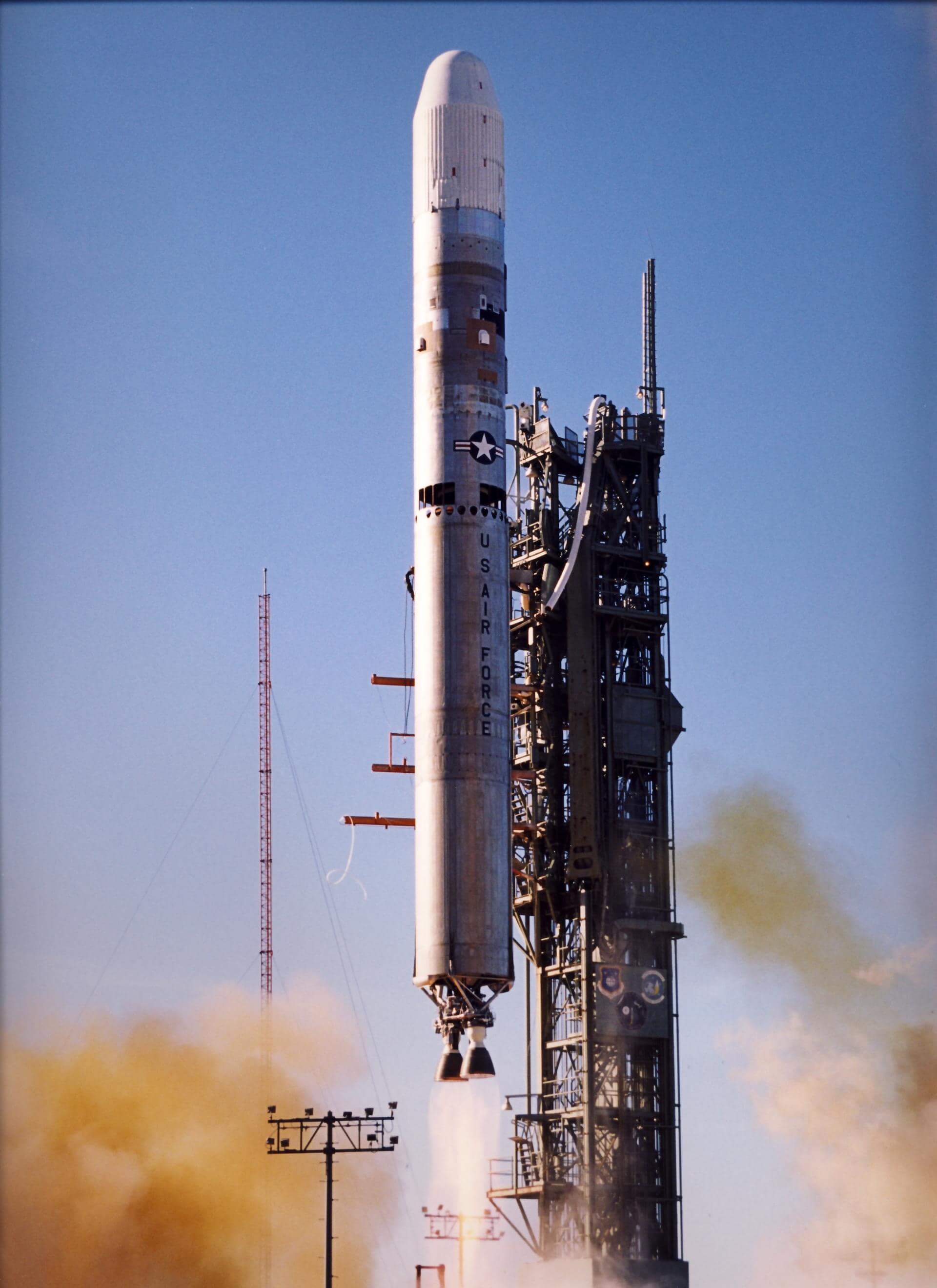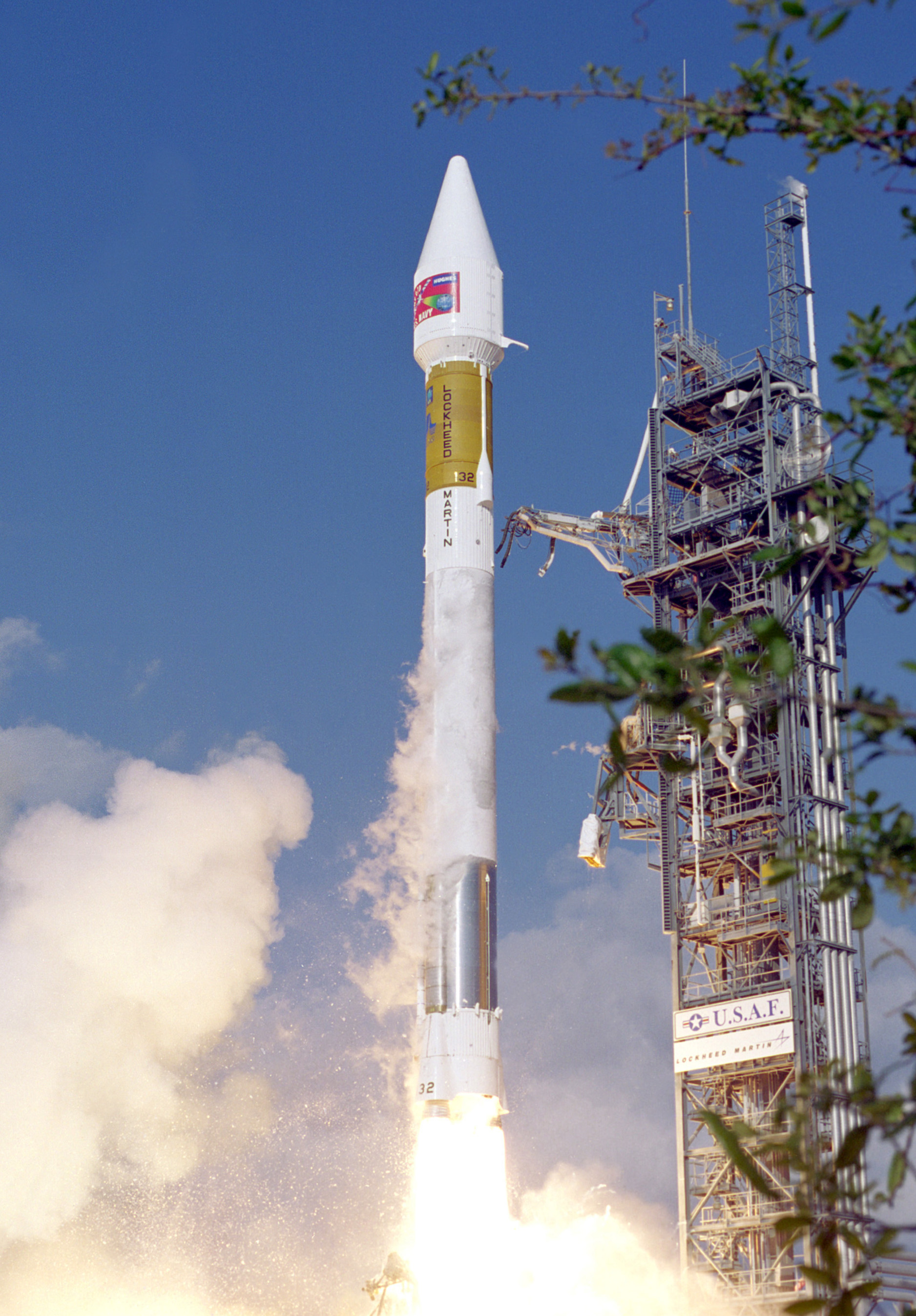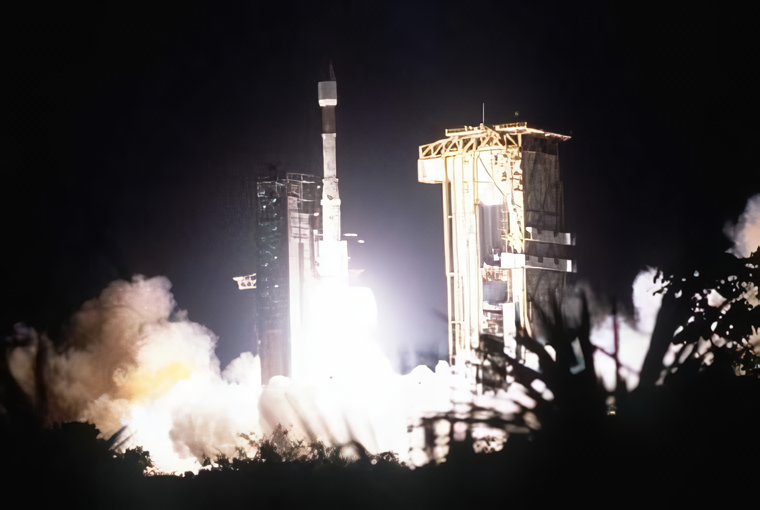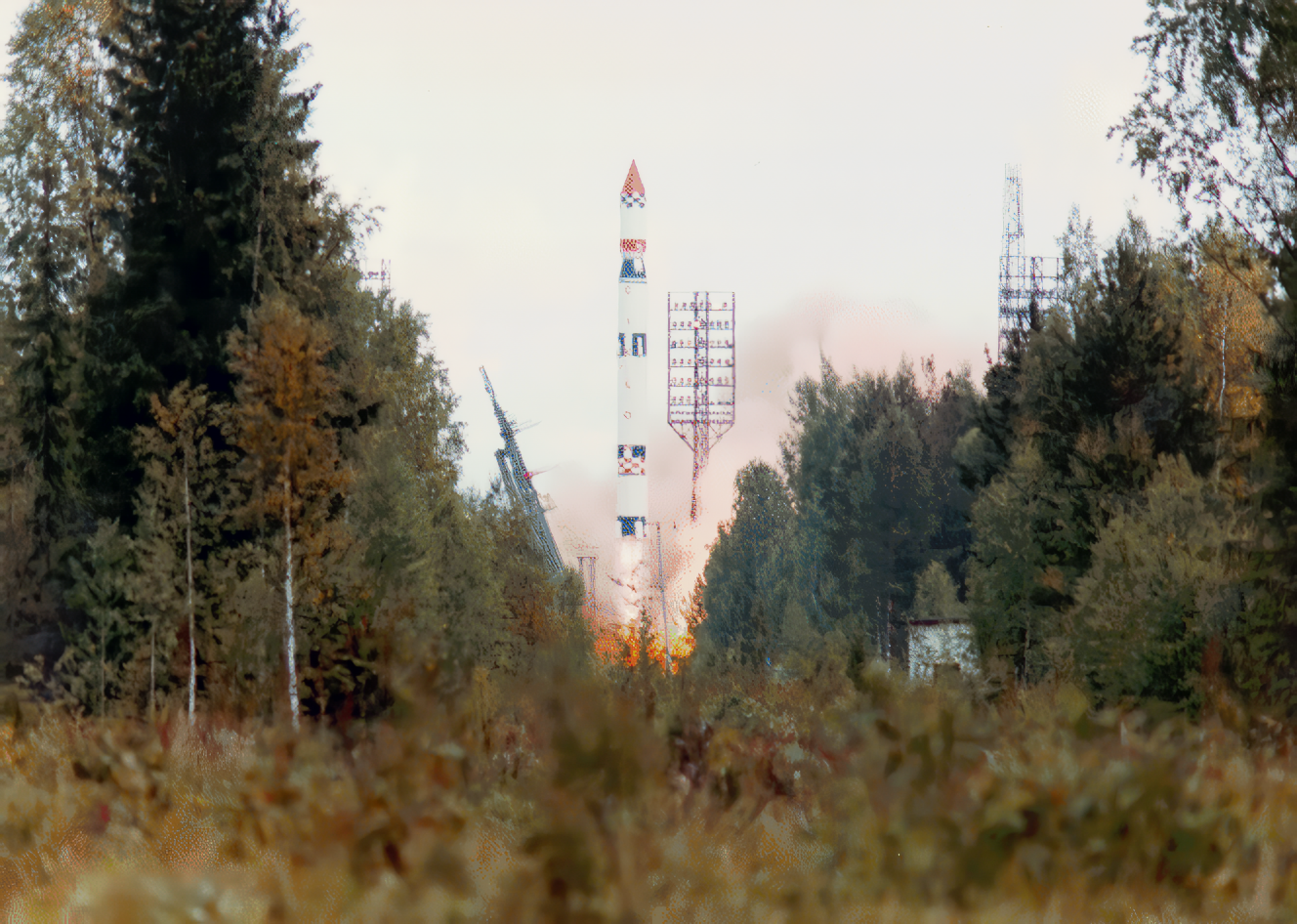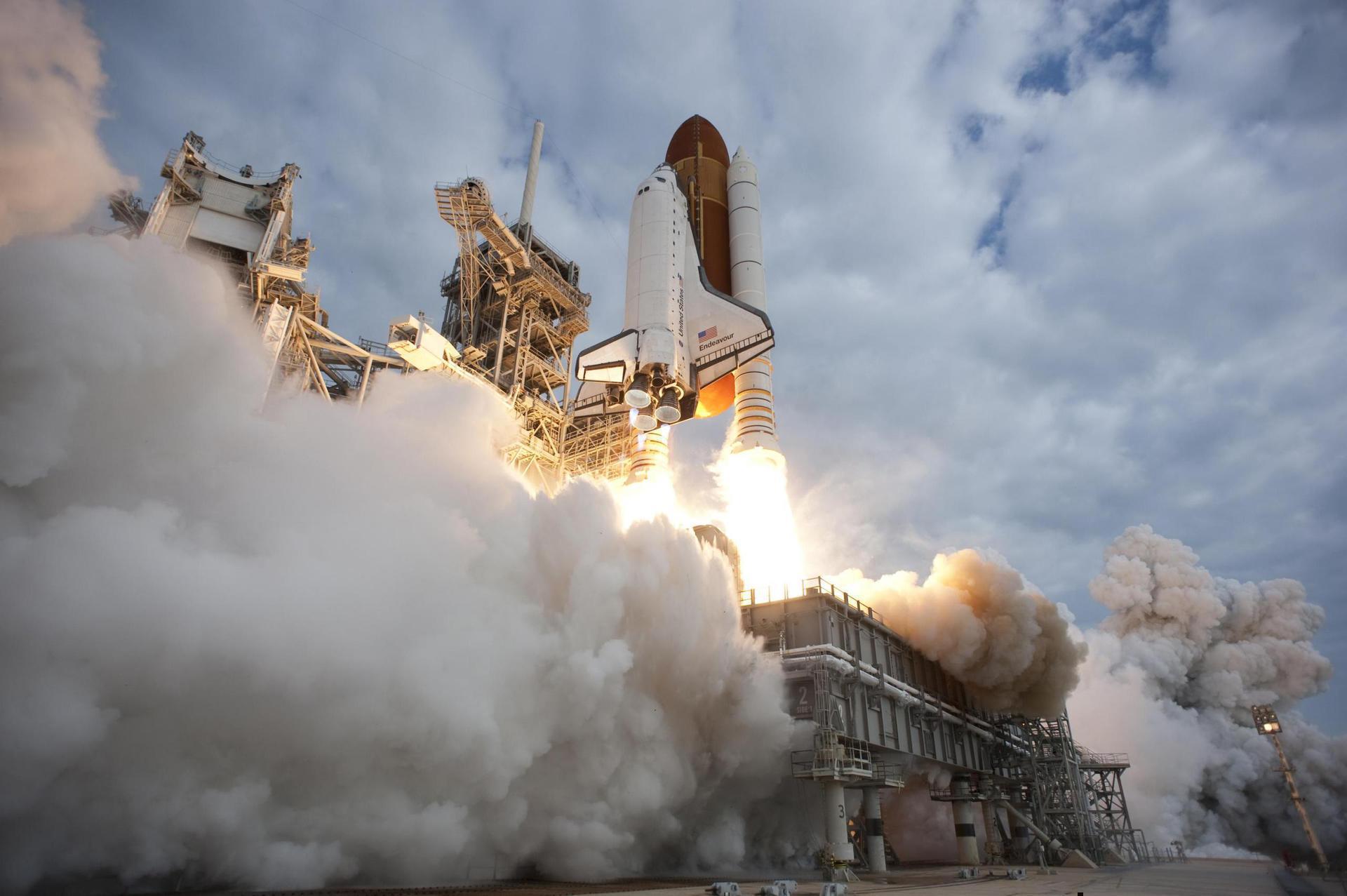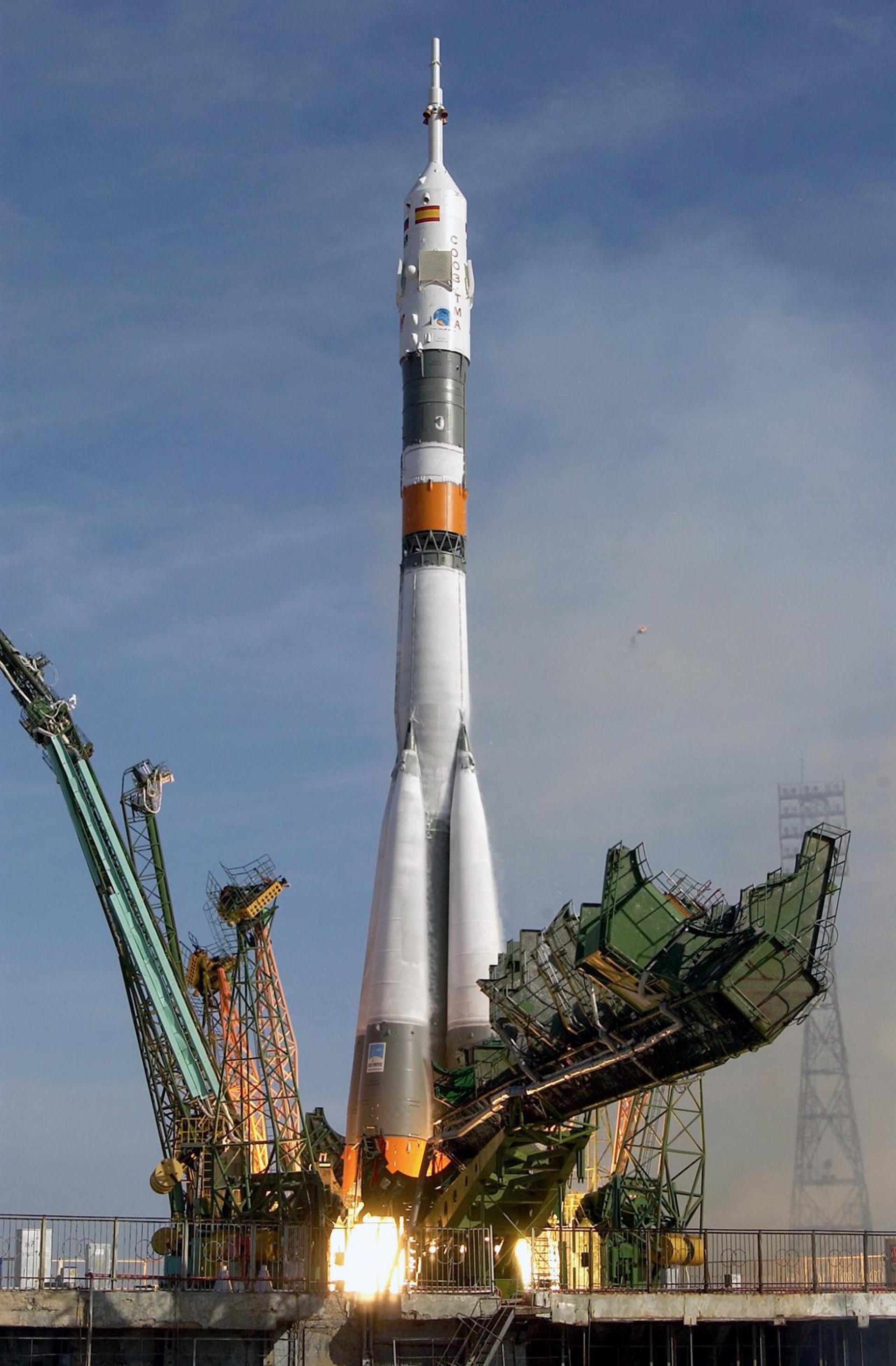Previous Spaceflight Launches
Filter by Agency, Locations or Vehicles
Show All LaunchesTitan II SLV | DMSP-5D2 F14
Lockheed Martin | United States of AmericaVandenberg SFB, CA, USA
April 4, 1997, 4:47 p.m.
Atlas IIA | Tempo 2
Lockheed Martin | United States of AmericaCape Canaveral SFS, FL, USA
March 8, 1997, 6:01 a.m.
Status: Launch Successful
Mission:
The Tempo 1 and 2 satellites can transmit more than 200 channels of high-fidelity broadcast programming to cable companies and home dishes. Tempo has twice the power and capacity of comparable satellites. It features 32 high-powered Ku-band transponders at 115 Watts, switchable to 16 transpondersders at 220 Watts. Total on-board transmitter power totals 3500 Watts.
Geostationary OrbitStart-1.2 | Zeya
Moscow Institute of Thermal Technology | RussiaSvobodny Cosmodrome, Russian Federation
March 4, 1997, 2 a.m.
Status: Launch Successful
Mission:
The Mozhayets 2 (Zeya, RS 16) satellite was a Russian Military experimental communications satellite launched on 4 March 1997. Zeya was named after the Zeya River, which is very close to its launch site, Cosmodrome Svobodniy. A Start-1.2 rocket transported it into orbit. This was the first satellite launched from this new Russian launch site in far eastern Russia.
Low Earth OrbitAriane 44P | INTELSAT 801
Aérospatiale | FranceGuiana Space Centre, French Guiana
March 1, 1997, 1:07 a.m.
Status: Launch Successful
Mission:
The Intelsat VIII-VIII/A series has been designed to meet the needs of Intelsat users throughout the system for improved C-band coverage and service. These spacecraft will incorporate six-fold C-band frequency reuse, two-fold frequency reuse of expanded C-band capacity, and the highest C-band power level ever for an Intelsat satellite. Consequently, Intelsat VIII will provide significantly more C-band capacity for public switched telephony and Intelsat Business Service, better quality for video services, and encourage new international VSAT applications.
Geostationary OrbitTitan 402B IUS | DSP 18
Lockheed Martin | United States of AmericaCape Canaveral SFS, FL, USA
Feb. 23, 1997, 8:20 p.m.
Atlas IIAS | JCSAT R
Lockheed Martin | United States of AmericaCape Canaveral SFS, FL, USA
Feb. 17, 1997, 1:42 a.m.
Tsiklon-3 | Strela-3 116 to 118 & Gonets 4 to 6
Yuzhnoye Design Bureau | UkrainePlesetsk Cosmodrome, Russian Federation
Feb. 14, 1997, 3:47 a.m.
Status: Launch Successful
Mission:
Gonets- satellite were the civilian derivate of the military Strela-3 satellite system. The Gonets system was offered to support international health organizations to meet their global communications needs for the transfer of medical data and records to remote sites. Strela-3 was second generation of strategic store-dump military communications satellite. Development of this generation to replace the first generation Strela-1M and Strela-2M satellites began in 1973.
Low Earth OrbitM-V | Haruka
IHI Corporation | JapanUchinoura Space Center, Japan
Feb. 12, 1997, 4:50 a.m.
Status: Launch Successful
Mission:
HALCA (Highly Advanced Laboratory for Communication and Astronomy), a.k.a. VSOP (Very Large Baseline Interferometry Space Observatory Programme) or Muses-B, is the first astronomical satellite dedicated to Very-Long Baseline Interferometry (VLBI). It was launched on its maiden flight by ISAS's M-5 [KM-V1] launch vehicle from Kagoshima Space Center on 12 February 1997.
Elliptical OrbitSpace Shuttle Discovery / OV-103 | STS-82
National Aeronautics and Space Administration | United States of AmericaKennedy Space Center, FL, USA
Feb. 11, 1997, 8:55 a.m.
Status: Launch Successful
Mission:
STS-82 was the 22nd flight of the Space Shuttle Discovery and the 82nd mission of the Space Shuttle program. It was NASA's second mission to service the Hubble Space Telescope, during which Discovery's crew repaired and upgraded the telescope's scientific instruments, increasing its research capabilities and achieved the highest altitude ever attained by a STS Orbiter (335-nautical-mile (620 km)).
Low Earth OrbitSoyuz-U | Soyuz TM-25
Russian Federal Space Agency (ROSCOSMOS) | RussiaBaikonur Cosmodrome, Republic of Kazakhstan
Feb. 10, 1997, 2:09 p.m.
Status: Launch Successful
Mission:
Soyuz TM-25 was the 30th mission and the 23rd long-duration expedition to Mir space station. It was also a part of the US/Russian Shuttle-Mir Program. The mission began on February 10, 1997, 14:09:30 UTC, launching Commander Vasili Tsibliyev, Flight Engineer Aleksandr Lazutkin and Research Cosmonaut Reinhold Ewald into orbit. They docked with Mir two days later. During their stay there, cosmonauts performed an EVA and various scientific experiments in medicine, biotechnology, Earth sciences etc. Station crew was visited by several Progress resupply spacecrafts, STS-84, and welcomed aboard Soyuz TM-26 with the next expedition crew. The mission concluded with a safe landing back on Earth on August 14, 1997, 12:17:10 UTC.
Low Earth Orbit